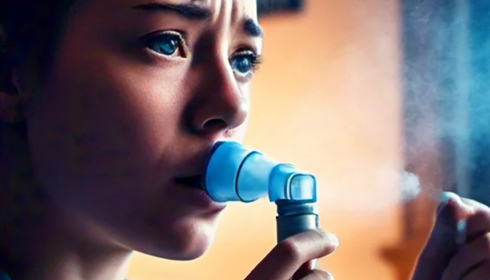
Inhaler Price Cap expected to halve Out of Pocket Expenses : Study
The high costs of inhalers, particularly for individuals with asthma and chronic obstructive pulmonary disease (COPD), have long been a barrier to proper treatment. Despite minimal therapeutic advances, inhaler prices have remained high due to patent thickets limiting generic competition. This issue, which has left many patients unable to afford necessary medication, was brought into focus in early 2024 when the U.S. Senate launched an investigation into the inflated prices set by major inhaler manufacturers. In response, three of the largest manufacturers—AstraZeneca, Boehringer Ingelheim, and GlaxoSmithKline—agreed to cap out-of-pocket spending on many of their brand-name inhalers at $35 per month, effective June 1, 2024, for both privately insured and uninsured patients.
A recent study, published in the JAMA Internal Medicine on December 30, 2024, explores the potential impact of this price cap. The research, led by Stephen A. Mein, MD, and colleagues from Harvard Medical School and Beth Israel Deaconess Medical Center, seeks to estimate the savings for individuals and the broader population as a result of this new policy.
The researchers analyzed data from the Medical Expenditure Panel Survey (MEPS), which captures detailed information on prescription drug spending, to identify the number of individuals who would benefit from the price cap. They found that 37.5% of individuals prescribed an eligible inhaler were spending over $35 out-of-pocket per month. For these patients, the price cap is expected to bring substantial savings, with an estimated $249.3 in mean annual savings per person. This could result in a total of $439 million in annual savings for the population affected.
The savings are expected to be highest for individuals using medications like Advair (GlaxoSmithKline) and Symbicort (AstraZeneca), which are among the most commonly prescribed inhalers. Notably, the study also reveals disparities in savings across different demographic groups. Uninsured individuals are projected to see the highest mean savings, at $354.6 annually, while Asian individuals could save an estimated $452.9 on average per year. These differences highlight the impact of insurance coverage and associated costs, with individuals in high-copay plans seeing more significant reductions in out-of-pocket expenses.
The study’s findings underline the potential benefits of the price cap in addressing cost-related barriers to adherence, which have been shown to negatively affect patient outcomes in both asthma and COPD. By reducing the financial burden on patients, the price cap could improve medication adherence, potentially leading to better long-term health outcomes for these individuals.
However, the study has limitations. The researchers did not account for potential changes in prescribing patterns or the introduction of new generic inhalers, which could further reduce costs. Additionally, they did not capture spending data for all eligible inhalers, though the inhalers excluded represent a smaller market share. Despite these limitations, the study concludes that the price cap will significantly reduce out-of-pocket spending for eligible patients, marking a step toward improved access to essential medications for many individuals with asthma and COPD.
The price cap on inhalers is expected to reduce out-of-pocket spending by more than 50% for those eligible, leading to significant annual savings. These savings could enhance accessibility and adherence to inhaler treatments, ultimately improving health outcomes for millions of individuals suffering from respiratory conditions.